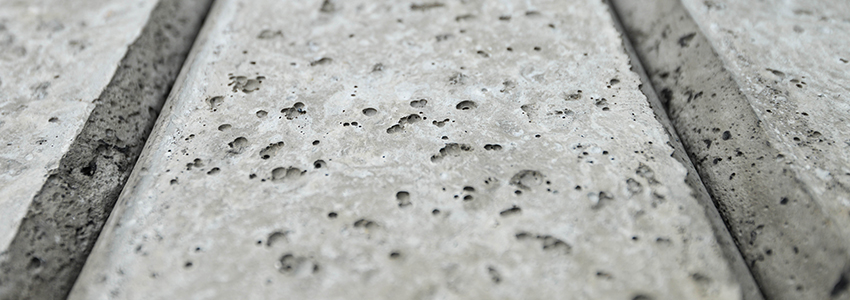A tenant’s guide to leasing buildings with precast flooring
Precast concrete seismic risks
by Paul Mautz

If you’ve been keeping up with the news on earthquakes and their effect on buildings, you would have come across much discussion on the performance of precast flooring systems.
A precast floor is cast off-site rather than poured as a building is being constructed. The floor slabs are cast to size, delivered to site and craned onto the structure’s beams where they sit. Once in place, a reinforced topping slab is poured over the top to create a seamless concrete floor.
Precast floors came to prominence in the ‘70s and gained popularity in commercial buildings during the ‘80s due to their low cost of construction and versatility. There are a few different types of precast flooring systems in use – Double Tee, Rib and Fill and Hollow Core (or Dycore) – depending on the building’s design and purpose.
These flooring systems have attracted attention because of how they performed during major earthquakes, particularly the 2011 Christchurch and 2016 Kaikoura quakes, as well as the earlier Northridge quake near Los Angeles in 1994.
Two main concerns
The first is how well precast floors are supported by the beams they sit on. Because they are not cast into the structure, the floors are at risk of slipping off their seating should the building frame significantly elongate or rotate during an earthquake, and the beam seating is of insufficient length or strength to continue to support the floor. The stiff nature of the precast floors means they don’t flex or grow in length to the extent the beams do (less ductility) and should the topping slab peel away from the structure, the flooring unit can fall away from the beam. This is what happened at Statistics House in Wellington in 2016.
The second issue is the possibility of a floor cracking below the topping slab due to deforming actions between the beam and the precast floor and lack of shear reinforcement. The cracks can potentially cause a structural failure of the floor resulting in it breaking away from its seating. This cracking has been observed in hollow core floors. A hollow core floor, in laymen’s terms, is a floor with a series of hollow ‘tubes’ or voids running through to lighten its weight. The cracking can extend through the voids at the weakest point, potentially causing the floor to split horizontally and fall away.
Seismic guidelines
The engineering sector which includes MBIE and the NZ Society for Earthquake Engineering (NZSEE), issues guidance to the engineering community on how to carry out an assessment for the purposes of determining if a building is earthquake prone. In 2018, they issued an updated guideline on the assessment of existing concrete buildings which incorporated new learnings on precast floors (yellow chapter). This guideline resulted from research commissioned by MBIE following the Kaikoura earthquake. While the new guideline is not yet established for assessing the NBS rating of a building for the purposes of determining whether it is earthquake prone under legislation, the NZSEE does recommend its use for other purposes.
Tenants should be aware of the type of flooring system in any building they lease or are assessing as a future option. If the building has precast floors, tenants should be asking when the last Detailed Seismic Assessment (DSA) was completed. If it was completed prior to 2018, then it may not reflect the current seismic rating of the building based on the latest guidelines.
Questions to ask
If the DSA is not current, tenants should be asking what investigations have been carried out on the precast floors and whether any remedial work has been undertaken. The common method of remedying the lack of seating is the installation of further support bars on the beams providing the floors with additional seating length. Also, additional shear reinforcement techniques designed to give support to the floor and topping slab can prevent further cracking and weakening of the floor. If work of this nature has been completed, then risk of failure is likely to be reduced.
Getting an updated seismic assessment for a building is a costly exercise. Therefore, landlords often aren’t prepared to obtain a DSA every time a new guideline is issued. However, recent research on precast floor performance and tenant’s heighted recognition of the issues should be a driver to update an earlier DSA and ascertain what works are necessary to ensure the building remains attractive to tenants from a safety and operational perspective.
This article is intended as general information only and not as professional advice. If you’re considering leasing a building with precast floors, we advise you to obtain engineering advice before entering into a lease.
---
TwentyTwo can help guide you through this issue and obtain the advice you need to make sound decisions on your prospective or current lease and provide commercial advice on any subsequent negotiations with landlords.
Paul Mautz is an Associate Principal at TwentyTwo, based in their Wellington office. Paul has extensive experience in the property sector including 15 years at TwentyTwo acting for tenants andowner-occupiers. He has first-hand experience helping clients deal with a range of seismic issues from a leasing and commercial perspective across the main NZ office markets
